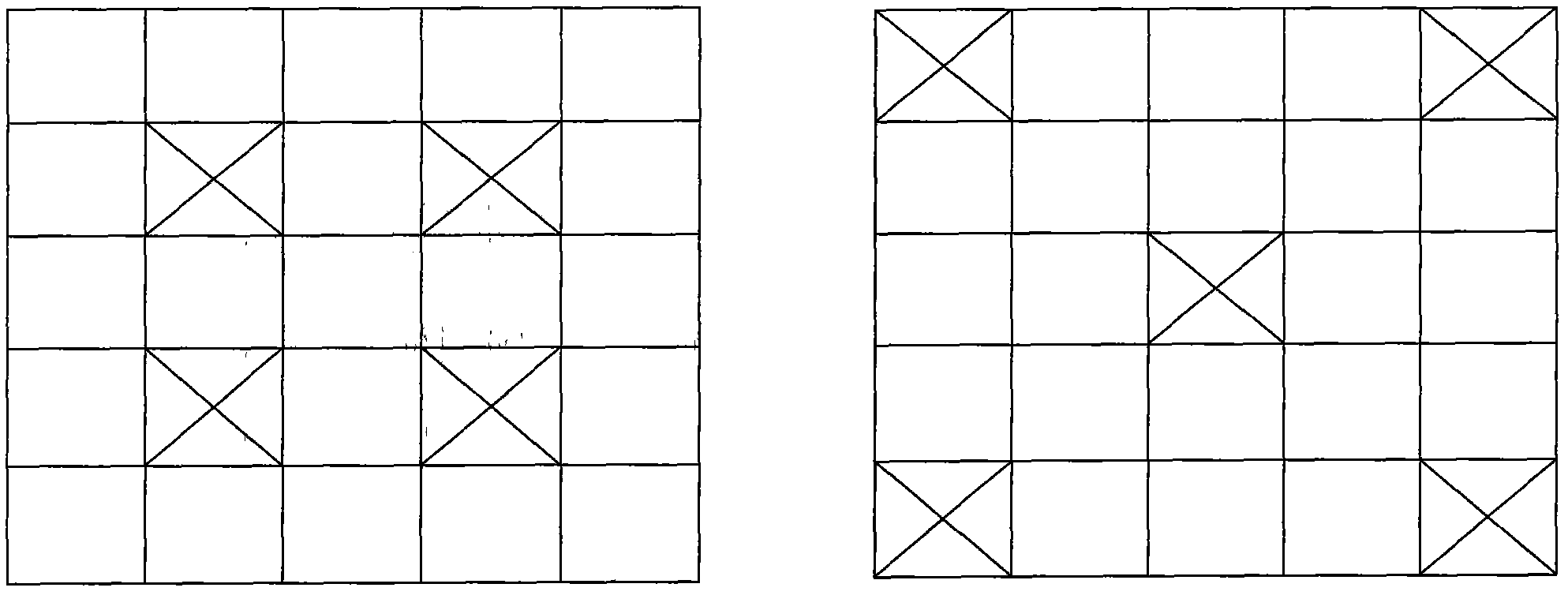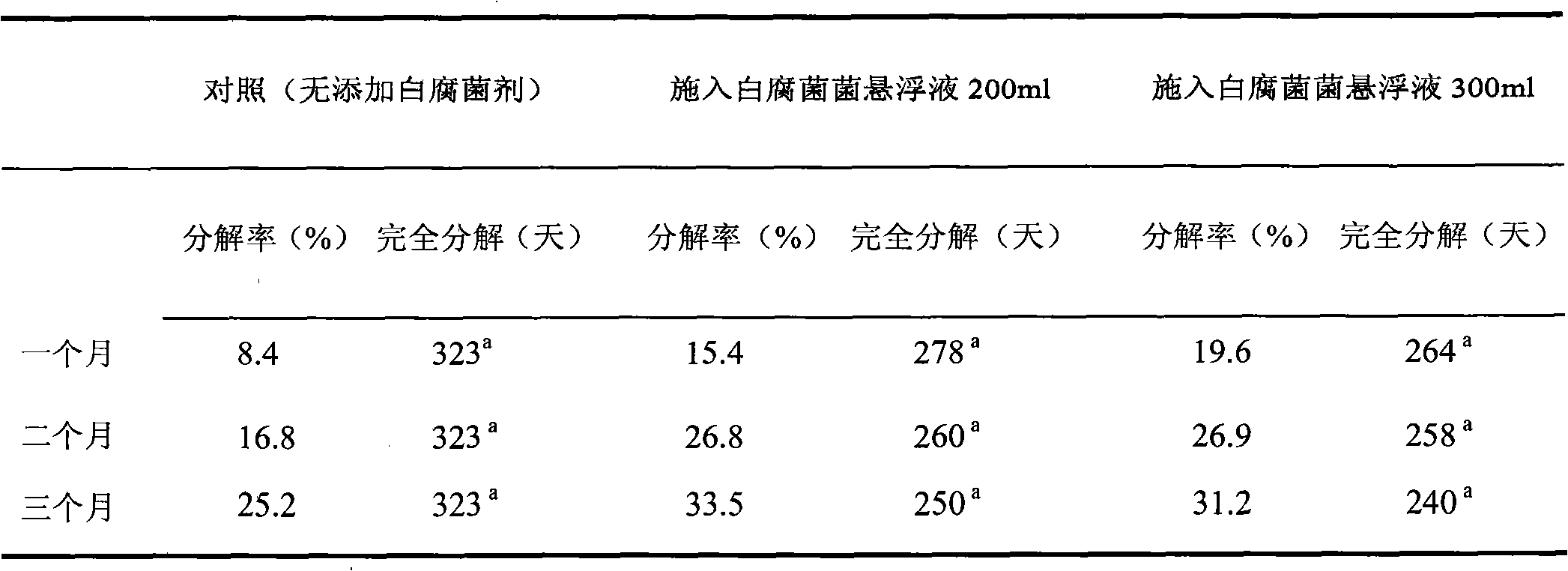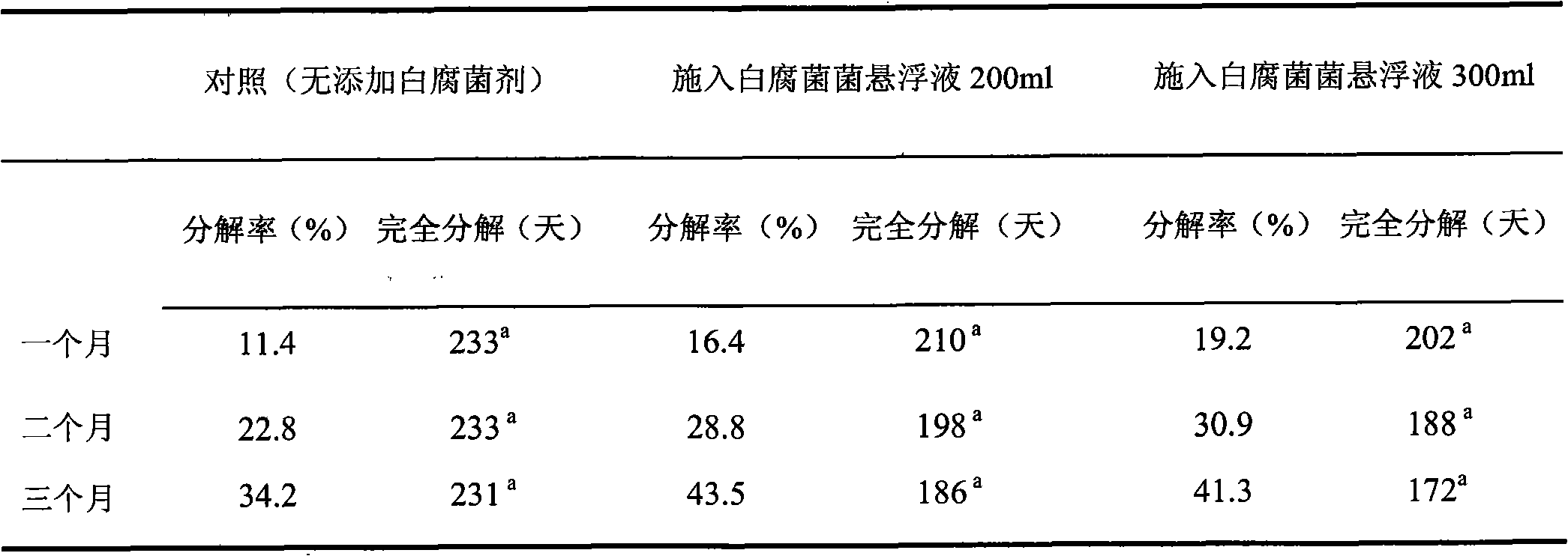Method for controlling lake plant siltation by white rot fungi
A technology of white rot fungi and lakes, applied in the field of environmental ecology, can solve the problems of microbial removal that have not been reported, and achieve the effect of strong applicability and solving environmental problems
- Summary
- Abstract
- Description
- Claims
- Application Information
AI Technical Summary
Problems solved by technology
Method used
Image
Examples
Embodiment approach
[0010] Carry out field research in lake areas to apply the technology in waters where aquatic plants are overgrown. Investigate the degree of water pollution, plant silting, and swamping in this area, and at the same time combine the thickness of the mud silt layer and the growth rate of plants at the end of the year to select the optimal dosage of the weed-inhibiting and controlling bacteria and the amount of weeding and controlling the bacteria. Best location.
[0011] Inhibition of weeds and control in bacterial agents: dilute white rot fungus spore suspension with basal medium, mix with reed debris, subpackage, cultivate and dry to make bacterial agents. The white rot fungus that the present invention adopts is Phanerochaete chrysosporium (Phanerochaete chrysosporium), which is derived from China Microorganism Culture Collection Management Committee, and the number is ACCC-30414.
[0012] 1. Preparation method of anti-grass and control bacteria agent:
[0013] Preparatio...
Embodiment 1
[0027] Aiming at the serious problem of swamping in the Baiyangdian lake area, the present invention is used to control the siltation of plant residues in the lake area. The dominant aquatic plant in this lake area is the emergent plant Phragmites reed, which grows in a large area and is slightly swampy, with a water depth of 1-1.5m. Each 200ml white rot fungus spore suspension (10 6 cfu / ml) and 300ml white rot fungus spore suspension (10 6 cfu / ml) was diluted with 70kg of sterilized basal medium and mixed with 85kg of reed debris sterilized by high temperature steam, packed in one bag per 4kg, cultured in a 30°C incubator for 10 days in a separate device, and then used in a 45°C oven Dry for 24 hours and set aside. In July, the weed-inhibiting fungus was applied to the bottom mud surface of the swampy lake. The decomposition of reed residue deposits were measured after one month, two months, and three months of application, respectively, and a control experiment without ad...
Embodiment 2
[0033] Aiming at the serious problem of swamping in Hengshui Lake, the present invention is used to control the silting of plant residues in the lake area. The dominant aquatic plants in this lake area are reeds and cattails. Cattails grow in a large area and are moderately swampy, with a water depth of 1.2-1.8m. Each 200ml white rot fungus spore suspension (10 6 cfu / ml) and 300ml white rot fungus spore suspension (10 6 cfu / ml) was diluted with 70kg of sterilized basal medium and mixed with 80kg of high-temperature steam sterilized sawdust, packed in a bag of 4kg, cultured in a 30°C incubator for 10 days in a separate device, and dried in a 45°C oven for 24 hours, spare. In July, the weed-inhibiting fungus was applied to the bottom mud surface of the swampy lake. The decomposition of reed residue deposits were measured after one month, two months, and three months of application, respectively, and a control experiment without adding white rot fungicide was set up. The deco...
PUM
 Login to View More
Login to View More Abstract
Description
Claims
Application Information
 Login to View More
Login to View More - R&D
- Intellectual Property
- Life Sciences
- Materials
- Tech Scout
- Unparalleled Data Quality
- Higher Quality Content
- 60% Fewer Hallucinations
Browse by: Latest US Patents, China's latest patents, Technical Efficacy Thesaurus, Application Domain, Technology Topic, Popular Technical Reports.
© 2025 PatSnap. All rights reserved.Legal|Privacy policy|Modern Slavery Act Transparency Statement|Sitemap|About US| Contact US: help@patsnap.com



